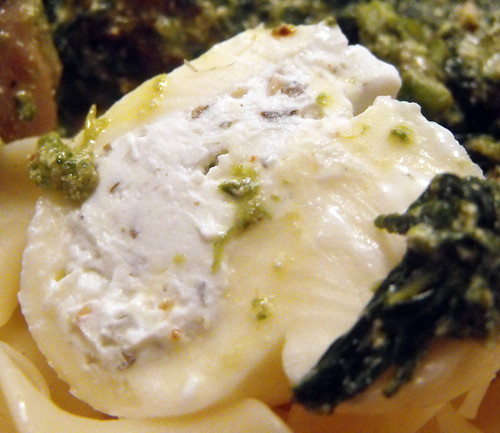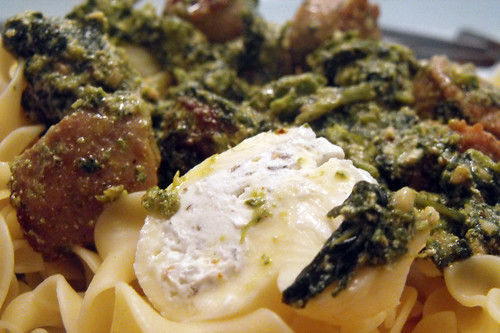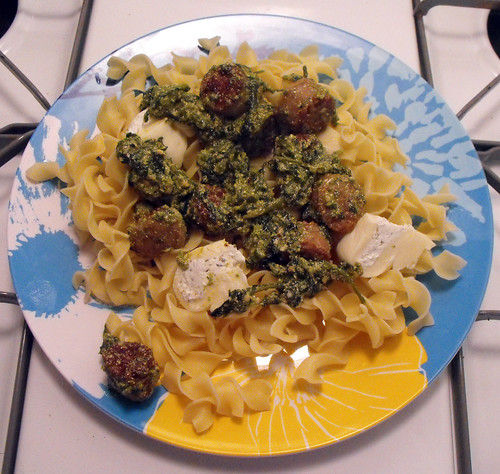In the past few weeks, I've started doing two very different things for the same two reasons:
1: It saves me money;
2: It gives me more options and variety.
Those two things are making my own kimchi and roasting my own coffee, but let's just talk about the second one right now.
I could give you a long tutorial on roasting coffee at home, with lots of photos of every stage, but I think that would make it sound more complicated than it is. The truth is, it's very much like popping popcorn.
 In fact, I'm using a popcorn popper to do it. You can roast coffee in a number of ways, but it all comes down to the same thing: make beans more hotter. The stovetop popcorn popper makes it easy to see the beans as they roast, and at $20 -free in my case, since I got a new popcorn popper last Christmas which replaced this one - it's by far your cheapest option. One of the problems I had with countertop coffee roasters is that at $150, $200, $500, it would take a hell of a lot of coffee before you've saved your money back. I realize saving money isn't the only reason to roast your own coffee, but I like that with the stovetop popper, it can be a reason.
In fact, I'm using a popcorn popper to do it. You can roast coffee in a number of ways, but it all comes down to the same thing: make beans more hotter. The stovetop popcorn popper makes it easy to see the beans as they roast, and at $20 -free in my case, since I got a new popcorn popper last Christmas which replaced this one - it's by far your cheapest option. One of the problems I had with countertop coffee roasters is that at $150, $200, $500, it would take a hell of a lot of coffee before you've saved your money back. I realize saving money isn't the only reason to roast your own coffee, but I like that with the stovetop popper, it can be a reason.
Here's how you roast coffee:
You get beans.
You put them in the popcorn popper and roast them for a few minutes.
You blow the chaff off.
You wait a little bit.
You grind and brew your coffee.
I mean, that's it. That's what I'm getting at here: it sounds like a big deal, and it can scale to become a big deal if you want it to or if you get hardcore serious about it - but that's just the nature of coffee, you knew? Brewing your coffee is the same way - it can be as simple as a drip coffee maker, a little more involved like a French press or Chemex, or you can get a $1200 espresso maker.
I'm a French press kind of person, both literally and figuratively.
You get beans.
I use Sweet Maria's. The quality, price, and variety are good, and the website is informative. You may be able to find green coffee beans locally and avoid the shipping charge.
Green coffee beans keep virtually forever - certainly for years - so you can stock up, and you save a lot of money per-pound if you order in five or ten pound lots. I had already been doing this with roasted coffee. Do keep in mind that beans lose weight as they roast: a pound of green coffee beans doesn't produce a roasted pound's amount of coffee.
You put them in the popcorn popper.
Microwave them for a little bit to get them hot, and your roasting time will be shorter - Jason Baldwin pointed that out to me.
Keep the beans constantly moving. The popcorn popper has a crank. This part is just like making popcorn - you put the popper on the stove on medium heat, and crank it while the beans cook. Because you don't add oil like you do for popcorn, it's that much more important to keep the beans in constant motion, to keep them from developing scorchmarks, but this doesn't take a lot of work or muscle power or anything - you don't need to crank FAST, just keep the crank constantly moving.
It'll take a few minutes. The beans will retain enough heat to continue cooking after you've stopped, so remember that once you start aiming for very specific roast levels, but the main thing to remember is the stages of roasting:
Yellow, first crack, second crack, dark roast, burnt/Starbucks.
I mean, it's a little more involved than that, but those are the stages you need to know. The green beans turn yellow first.
As they keep roasting, they hit "first crack," which sounds like popcorn popping, as the sugars in the bean caramelize. You can stop any time after this point - although don't stop when you hear only one crack, because the beans won't all roast at exactly the same rate.
The beans puff out a little and continue to caramelize, and will hit "second crack," which is faster-paced, cracklier like static, and more violent - the beans may jump around in the roaster a little, little bean fragments may fracture off.
After second crack, you reach the dark roast zone. A lot of the flavors present in lighter roasts, especially what we refer to as acidity in brewed coffee, disappear, but chocolatey, roasty, smokey flavors and body develop. This is one reason I sometimes combine light and dark roast coffees in the same pot.
After dark roast, it's just straight-up burnt.
Right now I'm at the point where I'm just trying shit out. I hit first crack and then I keep an eye on the beans and pull them when I feel like it. I'll get a feel for what roast level I want with which kind of bean, and then when I buy more beans, I'll have to get that feel all over again. But you're probably not going to fuck it up. The ideal, best possible, roast level for a given bean may be FC+ (Full City+), right at second crack - but it's not going to turn into awful bongwater just because you pulled it before second crack or during dark roast.
Roasting coffee produces smoke, but to be honest it doesn't produce nearly as much as I was expecting. I don't even have decent ventilation in my kitchen. Sure, it makes the whole house smell like roasted coffee, but unless you have a small apartment or the smoke detector is in your kitchen, I don't think it'll be set off - I know I've produced more smoke from searing steaks and preheating cast-iron to bake pizzas.
You blow the chaff off.
Here's where it's different from popcorn. The outer layer of the bean has become a thin, papery thing that needs to be removed. When you pull the roasted beans off the stove, dump them into a metal colander. Go outside. (We'll find out how much this part sucks in the winter.) Shake the beans in the colander while blowing on it - the shaking helps dislodge the chaff, the blowing blows it away. It's light like ash, and I assume biodegrades easily. You don't want to do this inside, because it's just going to go everywhere.
I've tried fanning it instead of blowing on it, but it's hard to fan with one hand while shaking the colander with the other - my brain goes cross-eyed.
You wait a little bit.
Let the roasted beans rest for a few hours. Maybe longer. It's going to vary by bean - I see a lot of people on the Sweet Marias forums using rests of four to five days for Robusta beans and Monsooned Malabar - but at least wait four hours.
Now you're good. Make your coffee.
Ten minutes of work, a few hours of waiting that you don't need to be around for, minimal cleanup. Right out of the gate you have better coffee than you can buy at the supermarket. It's certainly better than anything I can buy at the price, and comparable to what I can get for twice the price.
Kimchi's different. We'll get to it.






















